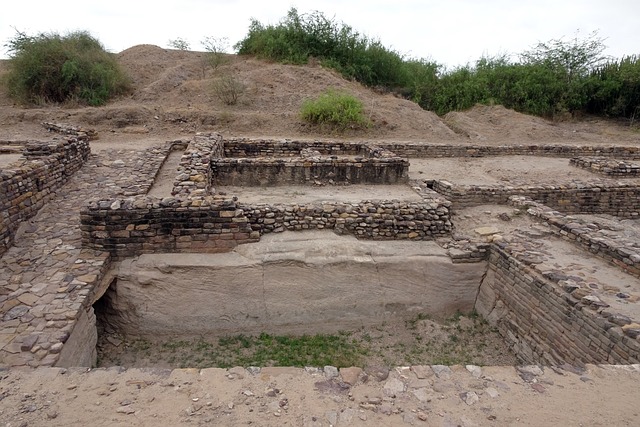The Indus Valley Civilization was an ancient Civilization. It developed along the Indus River, Present-day Pakistan, and Northwest India, around 3300 to 1300 BCE. This Civilization was one of the ancient world’s largest and most advanced Civilizations. It has a population of over five million people at its peak.
The Civilization is well known for its advanced urban planning, Architectural Innovations, and Intricate writing system. Well-planned cities with straight streets, Drainage systems, and Intricate public baths Characterized the Indus Valley Civilization.
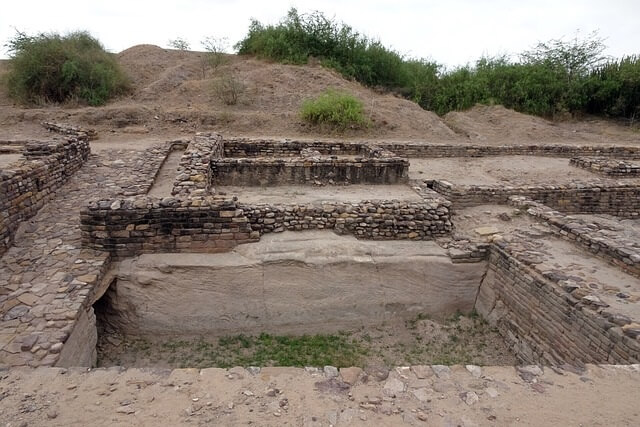
The cities of Harappa and Mohenjo-daro are among the most famous examples of Indus Valley urban planning. The Civilization was also known for its Innovations in Metallurgy, including producing copper, bronze, and tin.
Discovery of Harappan Civilization:
Several Archaeologists have dug the Harappan Civilization’s remains, also known as the Indus Valley Civilization. Some of the most notable Archaeologists include:
Sir John Marshal led Excavations at Harappa’s site in the early 1920s. He is often credited with Discovering the Indus Valley Civilization.
R.D. Banerjee dug at the site of Mohenjo-daro. He made significant contributions to the study of the Indus Valley Civilization.
Mortimer Wheeler dug several Indus Valley Civilization sites, including Harappa and Mohenjo-daro. He made significant contributions to the study of ancient urban planning and architecture.
B.B. Lal Conducted large Excavations at the site of Kalibangan. He Crucially Contributed to understanding the Indus Valley Civilization’s economy, society, and religious practices.
Jonathan Mark Kenoyer – He has Conducted major research on the Indus Valley Civilization, including Excavations at the site of Harappa. He has Significantly Contributed to understanding Civilization’s technology, craft production, and trade networks.
These Archaeologists, among others, have played a crucial role in Uncovering the remains of the Indus Valley Civilization. They revealed its advanced urban planning, social organization, and Technological Advancements. Their work has Impacted our understanding of ancient Civilizations and the development of Archaeology as a Discipline.
Importance of Indus Valley Civilization:
The Indus Valley Civilization was one of the most important and advanced ancient Civilizations. It emerged in the Indus River Valley around 2600 BCE and lasted until around 1900 BCE. Here are some of the reasons why the Harappan Civilization is considered important:
Urban planning and Engineering of Bronze Age Civilization:
The Harappan Civilization is known for its advanced urban planning and Engineering techniques. It includes Sophisticated sewage systems, Grid-based street layouts, and multi-storied buildings. This level of urban planning was seen again in the Romans more than a thousand years later.
Agriculture and food production of Indus People:
The Harappan Civilization was a highly Agricultural society. It has well Sophisticated irrigation systems and a variety of crops, including wheat, barley, and cotton. They also domesticated animals such as cattle, sheep, and goats. Their advanced Agricultural techniques allowed the development of large, densely populated urban centers.
Trade and commerce during Indus Valley Civilization:
The Harappan Civilization had a well-developed trade network extending from Mesopotamia and the Persian Gulf. They traded various goods, including textiles, pottery, and metals such as copper and bronze. It made the Civilization wealthy and allowed for a strong economic system.
Language and writing system:
Although the Harappan writing system still needs to be fully deciphered. But using a written language shows that the Civilization was highly advanced and had a well-developed communication system.
Art and architecture of Harappan Civilization:
The Harappan Civilization is known for its distinctive art and architecture, including intricate pottery, stone carvings, and bronze sculptures. They also created large public works, such as the Great Bath at Mohenjo-Daro, a complex water management system used for public bathing.
Legacy of Indus Valley:
The Harappan Civilization had a lasting impact on the Indian subcontinent, influencing later cultures and religions. Many of their practices, similarly worshiping the mother goddess and using sacred animals, can still be seen in modern Hinduism.
Overall, the Harappan Civilization was a highly advanced society that significantly contributed to human history. Its achievements in urban planning, agriculture, trade, language, and art continue to be studied and appreciated today.
Urban planning and Engineering in India:
It is one of the earliest urban civilizations in the world, with well-planned cities, advanced architecture, a system of writing, and a sophisticated understanding of water management, sanitation, and public health.
Town structure:
The Indus Valley Civilization had a well-organized town structure with a grid-like layout and sophisticated urban planning. The towns were typically situated near major rivers, such as the Indus and its tributaries, which provided a reliable water source for the inhabitants.
The towns were divided into different sectors, each with a specific purpose. For example, the residential areas were located on higher ground. They included houses made of baked brick, often with two or three stories.
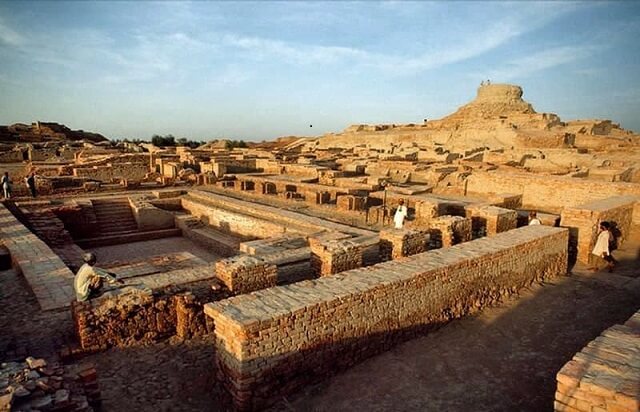
The lower floors were typically used for storage or as workshops, while the upper floors were used for living quarters. The houses were well-ventilated and often had courtyards that provided light and air.
The commercial areas near the city center included markets, bazaars, and craft workshops. The artisans specialized in making various goods, such as pottery, jewelry, and textiles, traded locally and internationally.
The cities also had public buildings, including granaries, public baths, and wells, designed to serve the community’s needs. Overall, the town structure of the Harappan Civilization was a testament to its people’s advanced urban planning and engineering skills.
Drainage Management:
The drainage system of the Harappan Civilization was a remarkable feat of engineering that helped to maintain public health and hygiene in the cities. The cities had a well-planned network of underground sewers, which collected waste and carried it away from the city to nearby rivers or agricultural fields.
The sewers were constructed using baked clay pipes and were connected to every house and public building in the city. They were covered with stone slabs or baked bricks to prevent blockages and allow easy access to maintenance.
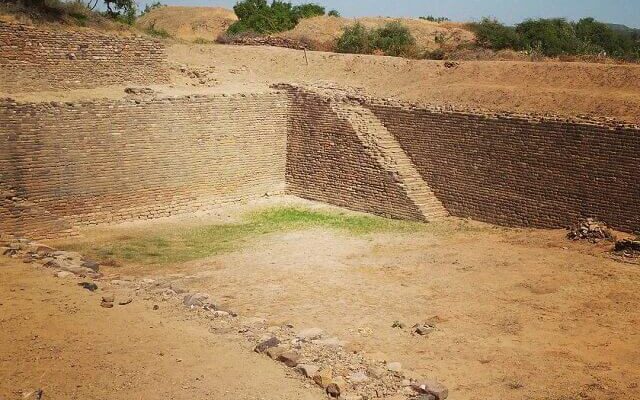
In addition to the underground sewers, the Harappans also had a system of surface drains designed to carry rainwater away from the streets and buildings. These drains were made of bricks lined with bitumen to make them waterproof.
The cities also had public baths connected to the drainage system, which helped to maintain personal hygiene. The baths were constructed using baked bricks and had a complex system of pipes and channels that allowed fresh water and used water to flow out.
The overall drainage management system of the Harappan Civilization was essential in maintaining public health and hygiene in the cities. It ensured that waste and rainwater were efficiently disposed of, preventing the spread of diseases and ensuring that the cities remained habitable.
Water Management:
The Indus Valley Civilization existed from approximately 3300 to 1300 BCE and was known for its sophisticated water management systems. The Indus people built an extensive network of canals, dams, and reservoirs to store and distribute water for irrigation and domestic use. The Harappan people also built elaborate networks of canals to bring water from the Indus River to nearby agricultural lands.
One of the most impressive feats of their water management system was the construction of large, brick-lined reservoirs, known as “baolis,” which were used to store monsoon rains for use during the dry season. These structures were often multi-storied and served not only as a source of water but also as social gathering places.
The Indus people also used smaller-scale techniques such as rainwater harvesting and the construction of wells. Overall, the water management systems of the Indus Valley Civilization played a crucial role in supporting the Civilization’s agriculture-based economy and were a significant factor in its success.
Public Health Care:
The Indus Valley Civilization, which existed from approximately 3300 to 1300 BCE, had a sophisticated public health care system. Evidence of this can be seen in many wells and public baths at Indus sites and in sophisticated sewage and waste management systems.
Public baths, known as “great baths,” were a common feature of Indus cities. These large, multi-roomed buildings had drains and systems for regulating water flow. They were likely used for both bathing and religious rituals.
The Indus people also had an extensive system of wells for drinking water and irrigation.
In addition to these structures, the Indus civilization also had a sophisticated sewage and waste management system. Household waste was disposed of through a network of brick-lined drains that ran along the streets. These drains were connected to larger sewage channels that carried debris away from the city.
Overall, the public health care system of the Indus Valley Civilization was advanced for its time and played an important role in maintaining the health and well-being of the population.
Agriculture and Food Production in Harappan Civilization:
Agriculture was a vital part of the economy of the Indus Valley Civilization. The people of the Harappan Civilization relied on a combination of agriculture and animal husbandry to support their population. Some of the key aspects of their agricultural practices include:
Irrigation:
The Harappans developed a sophisticated system of irrigation to grow crops in an otherwise arid region. Canals and reservoirs were used to store and distribute water for irrigation, allowing them to cultivate various crops, including wheat, barley, peas, and sesame.
Use of Plows:
The Harappans used plows to till the soil, making preparing the ground for planting easier. They also used bullocks to pull the plows, indicating the domestication of these animals. The Harappans likely used a crop rotation system, alternating between different crops to maintain soil Crop Rotation.
Storage Facilities:
The Harappans had extensive storage facilities, including large granaries, which allowed them to store surplus grain and other crops for later use.
Animal Husbandry:
In addition to agriculture, the Harappans also relied on animal husbandry to supplement their diet. They raised cattle, sheep, and goats, which provided them with meat, dairy products, and wool.
The agriculture practices of the Harappan Civilization were characterized by their sophisticated irrigation systems, use of plows and bullocks, crop rotation, and extensive storage facilities.
These practices allowed the people of the Harappan Civilization to support a large and complex society. Their success in agriculture was a crucial factor in their Civilization’s long-term stability and prosperity.
Trade and Commerce in Indus Valley Civilization:
The Harappan Civilization had a well-developed trade and commerce system, which allowed for exchanging goods and ideas with neighboring regions. Here are some key aspects of trade and commerce during the Harappan Civilization:
Trade networks of Harappan Civilization with other Civilizations:
The Harappans had a vast trade network that extended over a large part of the Indian subcontinent and beyond. Archaeological evidence suggests Harappans traded with regions as far as Mesopotamia, the Persian Gulf, and Central Asia.
Trade goods:
The Harappans traded various goods, including textiles, pottery, metal tools, and ornaments made of gold, silver, and precious stones. They also sold luxury items such as ivory and beads.
Trade routes:
The Indus River was the main trade artery in the Harappan Civilization, and many major cities were located on its banks. The river provided easy transportation for goods and people and was also used for irrigation purposes. The Harappans also used overland routes to trade with other regions.
Seals and weights:
The Harappans used seals and weights to regulate trade and commerce. These steatite or ivory seals were used to stamp clay tablets that recorded trade transactions. The weights, made of stone or bronze, were used to measure quantities of goods.
Standardized weights and measures used by Harappan People:
The Harappans used a standardized system of weights and measures, which allowed for uniformity and fairness in trade transactions. This system was based on a unit of weight called the “Sindhughati,” which was equivalent to around 28 grams.

Urban centers and specialized production:
The Harappan cities were centers of specialized production, with each city specializing in certain types of goods. For example, Mohenjo-Daro was known for its textile production, while Harappa was known for its pottery. This specialization allowed for efficient production and trade.
Overall, the Harappan Civilization had a highly developed trade and commerce system that allowed to exchange of goods and ideas with neighboring regions. This system was based on a vast trade network, standardized weights and measures, and specialized production in urban centers.
Scripts and crafts during Harappan Civilization:
Scripts of Harappan Civilization:
One of the defining features of this Civilization was its use of a script, which still needs to be completed to this day. The Indus script, as it is known, is considered to be one of the earliest examples of writing in South Asia.
The Indus script consists of many short inscriptions on seals, seal impressions, pottery, and other artifacts. The inscriptions consist of between 1 and 5 characters and are mostly pictographic, depicting objects such as animals, plants, and human figures.
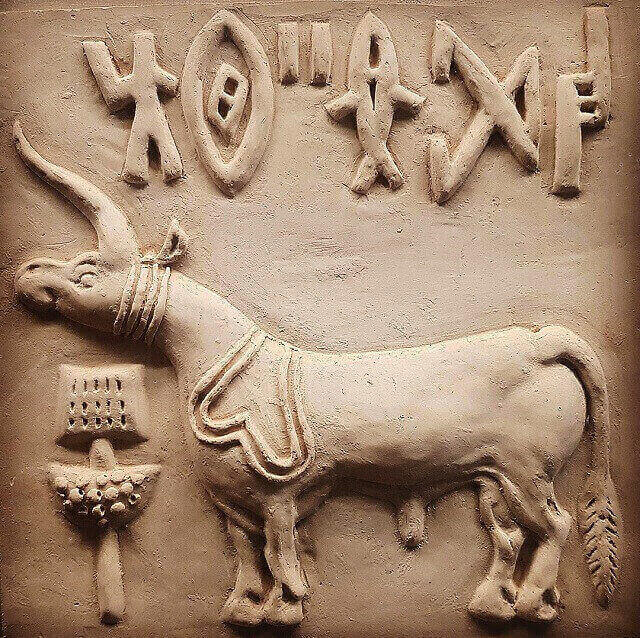
The script is written from right to left, and many characters appear composed of simple lines and curves.
Despite numerous attempts to decipher the Indus script, its meaning remains a mystery. Some scholars believe the script was used to record transactions or personal names. In contrast, others think it may have been used for religious or magical purposes.
However, the lack of longer texts or inscriptions with explicit content makes it difficult to determine the script’s function accurately.
The system of writing used in the Harappan Civilization remains one of this ancient Civilization’s enduring mysteries. While it is clear that the Indus script was an important part of Harappan culture and played a role in the administration and organization of their society, its exact meaning and purpose continue to elude us.
Crafts found during Harappan Civilization:
The people of the Harappan Civilization were skilled in various crafts, which played an important role in their economy and daily life. Some of the most amazing crafts found in the Harappan Civilization include:
Pottery:
Harappan pottery was produced in various forms, including jars, cups, bowls, and plates. The pottery was made from clay and was typically decorated with geometric designs and images of animals and plants.
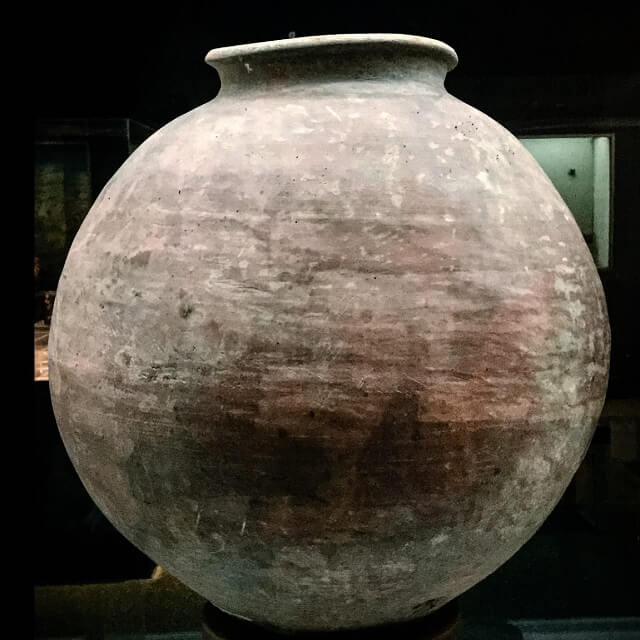
Seals and Sealings of Harappan Civilization:
One of the defining features of the Harappan Civilization was seals and sealing, which were used to mark ownership and convey information. The seals were made from various materials, including stone, copper, and ivory, and were typically decorated with images of animals and symbols.
Metalworking:
The Harappans were skilled metalworkers, producing objects such as axes, knives, and jewelry from copper and bronze. They also used gold and silver for their more elaborate and decorative items.
Weaving :
The Harappans were skilled weavers who produced textiles from wool and cotton. Textiles were used for clothing and household goods; some finer examples were decorated with intricate designs and patterns.
Bead Making by Harappan People:
The Harappans were also known for their skill in bead making, producing a wide variety of beads from various materials, including stone, shell, and glass. The beads were used for personal adornment and were often strung together to make necklaces and bracelets.
The people of the Harappan Civilization were skilled in various crafts, which played a crucial role in their economy and daily life. The high level of technical skill and artistic creativity evident in their craftwork reflects the advanced level of Civilization that they had achieved.
The Political Structure of Harappan Civilization:
While much is still unknown about the exact form of government and social structure of the Harappan Civilization, it is widely believed that a centralized administration ruled it. However, there is no direct evidence of a monarchy or a specific ruling class, and society is believed to be more egalitarian.

Some of the key characteristics of the Harappan Civilization that suggest the presence of a centralized administration include:
Urban Planning:
The cities of the Harappan Civilization were highly organized, with well-planned streets and a uniform system of weights and measures. It suggests that a centralized administration managed the cities.
Standardization of Seals and Scripts:
Using standardized seals and script suggests that the Harappans had a centralized administration and communication system. The seals were used to mark ownership and convey information, and the scripts were used for record-keeping and communication.
Public Works:
The extensive public works, such as the Great Bath in Mohenjo-Daro and the granaries, suggest that the Harappans had a centralized administration that could organize and carry out large-scale projects.
While the exact form of government and social structure of the Harappan Civilization remains unknown, the evidence suggests that a centralized administration ruled the Civilization. However, historians and archaeologists still debate the exact nature of this administration and the people who held power.
The decline of the Harappan Civilization:
The exact reasons for the decline of the Indus Valley Civilization, also known as the Harappan Civilization, are unknown, and several theories have been proposed. The Civilization flourished in the northwest region of the Indian subcontinent, present-day Pakistan and northwest India, from about 3300 BCE to 1300 BCE. Some of the most commonly cited reasons for its decline include the following:
Climate Change:
Climate changes, particularly the drying up of the Ghaggar-Hakra River and the Indus River, may have played a role in the decline of the Harappan Civilization. The drying of the rivers would have reduced water availability for agriculture and led to food shortages, causing the collapse of Civilization.
Invasions or Migrations at the end of Harappan Civilization:
There is evidence of a period of destabilization and conflict at the end of the Harappan Civilization. Invasions or migrations may have contributed to its decline. However, there is little direct evidence to support this theory.
Societal Collapse:
The Harappan Civilization may have suffered from internal societal problems, such as population growth and resource depletion, which could have led to its decline. It could have been exacerbated by environmental factors such as climate changes and rivers drying up.
Earthquakes:
Some researchers have suggested that earthquakes played a role in the decline of the Indus Valley Civilization. The region is known for its seismic activity, and earthquakes may have damaged the cities and disrupted the infrastructure, leading to the collapse of Civilization.
The reasons for the decline of the Harappan Civilization have yet to be well understood, and a combination of factors may have contributed to its collapse. Moreover, the cause or causes of the decline remain a subject of ongoing research and debate among historians and archaeologists.
In conclusion, the Harappan Civilization was a sophisticated and advanced civilization that had a lasting impact on the Indian subcontinent. Despite the many questions about its government, social structure, and decline, its achievements in urban planning, agriculture, and trade have had a lasting impact and continue to be studied and admired.
Conclusion:
The Indus Valley Civilization, also known as the Harappan Civilization, was one of the world’s largest and most advanced ancient civilizations. It flourished in the northwest region of the Indian subcontinent, present-day Pakistan and northwest India, from about 3300 BCE to 1300 BCE.
The Harappan Civilization was known for its urban planning, standardized seals and script, public works, and advanced agriculture and trade systems. The cities of the Civilization were well-organized, with well-planned streets, public baths, and granaries.
For more articles, visit: 21Hashtags
